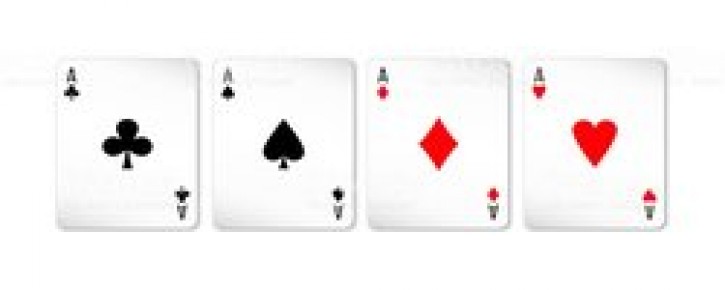
Poker is a complex game with many factors involved. While you need a bit of luck and some good psychology, you also need math in order to truly master this game. In this article we will take a look at the probabilities in poker and you will also find the answer to the question: how many aces are in a deck of cards?
The simplest example to understand probabilities is that of flipping a coin. In this case there is a 50% probability to get heads and 50% to get tails. But in poker the probabilities are much more complex, since we are dealing with 52 cards with various numbers (1 to 10 plus the Jack, Queen, King and Ace) and four different suits (clubs, diamonds, hearts and spades).
So now you know the answer: there are 4 aces in a deck of cards and the odds of getting an Ace as your first card are 1 in 13 (7.7%). You have bigger chances to get a spade for example, as odds are 1 in 4 (25%). And things get more complicated as more cards are dealt, each card changing the odds. In this case if you got an ace from the first hand, there are now 3 aces left out of 51 cards. So the odds drop to 1 in 17 (5.9%).
We won’t get in the detailed math here, but the probability of getting two aces from the first hand is as low as 0.45%. To place this in a real time situation, if you are playing online or at a real casino an average of 30 hands per hour, you will receive a pair of aces from the first hand once every 7.5 hours. But the probability of receiving any pair of cards is 5.9%, or once every 35 minutes.
Here are a few other interesting post-flop probabilities:
- You have odds of 2 to 1 (32%) to pair at least one card if you start with a non-pair
- You have odds of 15 to 1 (6.5%) to make a flush from 2 suited cards
- You have odds of 9 to 1 (10.9%) to make a four flush from 2 suited cards
- You have odds of 8 to 1 to flop a set from a pair (12%)
- You have extremely low odds of 400 to 1 that a pair will flop four of a kind (0.25%)
As you can see, suited cards don’t make a flush too often and small pairs are not always profitable. A common mistake for many beginners is that they overvalue suited cards in starting hands.
Things get more interesting and more complicated as more cards are dealt, and if you are interested in improving your poker skills, you should definitely do some more research on odds. Knowing these aspects will help you to make smarter decisions and to play with your head, not with your emotions.
All news
